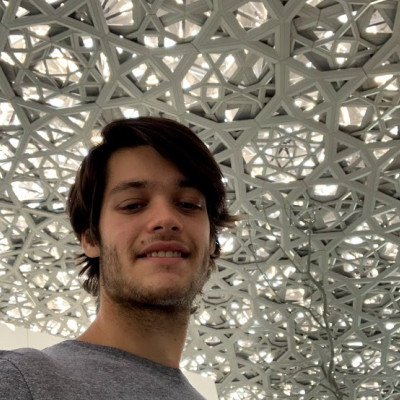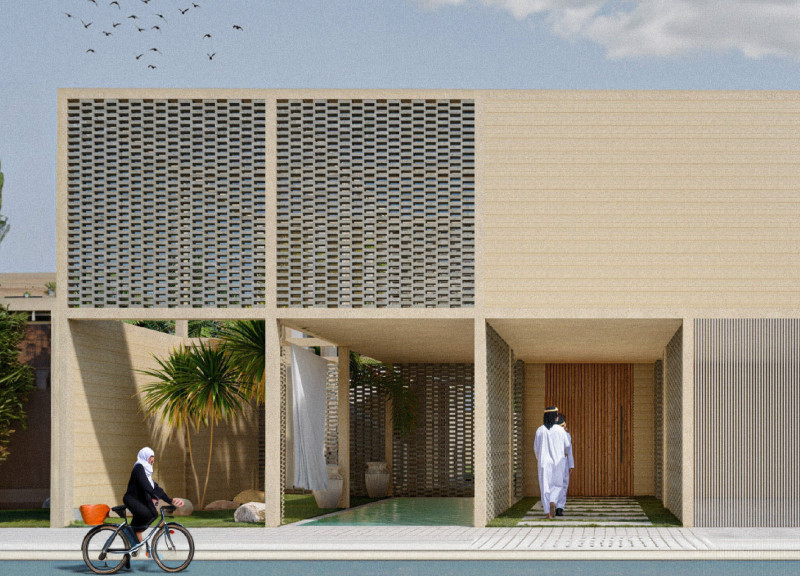5 key facts about this project
At its core, the project represents a commitment to enhancing the quality of life for its users while remaining sensitive to the unique characteristics of its site. The primary function of the building is to accommodate a community space, designed for both social interaction and various activities. This multifunctionality underscores the architect's intention to create a welcoming environment that fosters community engagement and collaboration.
The architectural design incorporates several key features that are vital to its overall success. One of the most notable elements is the thoughtful organization of indoor and outdoor spaces. Large windows and openings facilitate an abundance of natural light, while also providing views of the surrounding area. This connection to nature is more than aesthetic; it promotes well-being and a tranquil atmosphere for users. The careful placement of these openings minimizes reliance on artificial lighting and heating, aligning the project with sustainable practices.
In terms of materiality, the project utilizes a carefully selected palette that enhances both the visual appeal and functional capabilities of the structure. Materials such as timber, glass, and steel have been employed. Timber provides warmth and a tactile quality that contrasts with the sleekness of glass and steel, promoting a sense of comfort and approachability. The glass serves not only to maximize light but also to create transparency, encouraging interactions between the interior and exterior. Steel, used in structural elements, offers durability and support, contributing to the building's longevity.
Unique design approaches also manifest in the project's layout and landscape integration. The architectural plan emphasizes open spaces that encourage fluid movement throughout the building, further supporting the goal of fostering community connectivity. The architects have skillfully crafted pathways and gathering areas that weave seamlessly into the natural landscape, providing a cohesive transition between built and unbuilt environments. This consideration for landscape architecture ensures that the project is not an isolated structure but rather a part of a larger ecological and social fabric.
Moreover, the use of local materials not only reduces the carbon footprint involved in transportation but also roots the project in its context, reflecting the culture and history of the area. This conscious choice enhances the project’s identity, allowing it to resonate more deeply with its users and the local community. In addition, the architects have woven in elements that respond to the local climate, ensuring that the building is not just a static entity but a dynamic and responsive one.
As the design unfolds, attention to detail is evident throughout. Elements such as shade devices and green roofs highlight the architects’ commitment to sustainability while also providing aesthetic value. These features work to enhance environmental performance by reducing energy consumption and promoting biodiversity.
In essence, this architectural project serves as an exemplary model of modern design thinking, where aesthetics, function, and sustainability converge to create a building that is both practical and meaningful. By bridging architectural innovation with community needs, the project stands as a vital asset, capable of nurturing social connections and enhancing the environment.
For those interested in delving deeper into the intricacies of this architectural masterpiece, further exploration of the architectural plans, architectural sections, and other architectural design documents is highly encouraged. These resources will provide valuable insights into the thought processes and considerations that shaped this unique project, enhancing one’s understanding of contemporary architectural ideas and their application in real-world contexts.


 Martin Augusto Crespi,
Martin Augusto Crespi, 























